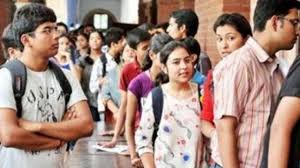Source: swarajyamag.com
The Economic Survey came out day before yesterday, highlighting significant aspects of Indian economy. Economic Survey is important for IAS aspirants not just from UPSC Civil Services Prelims but also from Mains perspective.
Here, we are providing the summaries of the chapters point wise. The articles will cover the whole Economic Survey in series, topic-wise. So that students can do a quick revision.
Chapter 1: Shifting Gears: Private Investment 01 as the Key Driver of Growth, Jobs, Exports and Demand
- For becoming a $5 trillion economy by 2024-25, India needs a sustained real GDP growth rate of 8 per cent.
- Eight per cent real growth rate requires a “virtuous cycle” of savings, investment and exports catalysed and supported by a favourable demographic phase, driving job creation and technological progress. The survey sees economy as being either in a virtuous or a vicious cycle, and thus never in equilibrium.
- Such investment can be from the government in infrastructure as this investment “crowds in” the private investment or from the private sources.
- Private investment is the ‘key driver’ that drives demand, creates capacity, increases labour productivity, introduces new technology, allows creative destruction, and generates jobs.
- Aggressive export strategy should be a part of the growth model. Since the share of consumption in GDP is constrained by high savings, the demand for newly created capacity from investment will come from exports.
- India’s share in global exports currently is quite low. Therefore, despite poor global demand, India can increase its share.
- Investment increases factor productivity, hence enhances export competitiveness.
- The survey also argues that instead of killing jobs, high investment rate creates jobs. The loss in jobs is sector-specific, but when examined in the full value chain, capital investment fosters job creation as capital goods production, research and development, and supply chains also generate jobs.
Criticism of Anglo-Saxon model of economic equilibrium
- The global financial crisis of 2008 highlighted the limits of this model. According to the Survey, instead of being in equilibrium, economies are either in a vicious cycle or a virtuous cycle.
- The Survey also points out that the method of building theories in economics is flawed wherein a standard model is imposed on the real world, and when the results don’t concur, it is labelled as a ‘puzzle’.
- The Survey instead asks for a model that accounts for dynamic effects over time in complicated, interconnected system of global economy
- Three things are key for such a model: a clear vision, strategy to obtain a clear vision and flexibility to adapt to changing situations
Tools for navigating the economy in a constant state of disequilibrium
- Changing the economic model to a dynamic one, with virtuous or vicious cycle
- Measuring new concepts like job production and productivity by new firms vs old firms
- Going beyond “rational choice” model to incorporate behavioural insights or “nudges”
- Using micro-data for public good, to enable welfare-driven policy making
- Using technology to distribute social welfare effectively, thereby reducing inequality
- Both stocks and flows to be taken care of
Achievements of India in last five years:
- Highest growth rate among major economies, leaving China behind; became sixth-largest economy of the world
- High growth rate while maintaining macro-economic stability and Fiscal Deficit, inflation in control
- Current Account Deficit was also in control, Forex reserves rose to all-time high
- The Survey also hailed several initiatives of the government- JAM trinity combined with DBT for better beneficiary targeting, Ujjwala Yojana, and Ayushman Bharat, electrification drive, highway-building at record pace and UDAAN
- The Survey also hailed structural reforms like GST and IBC
Today’s article summarised the targets for economic growth, models, achievements of India from the first chapter of the Survey. In the next part, we will move on to different factors of economic growth.



